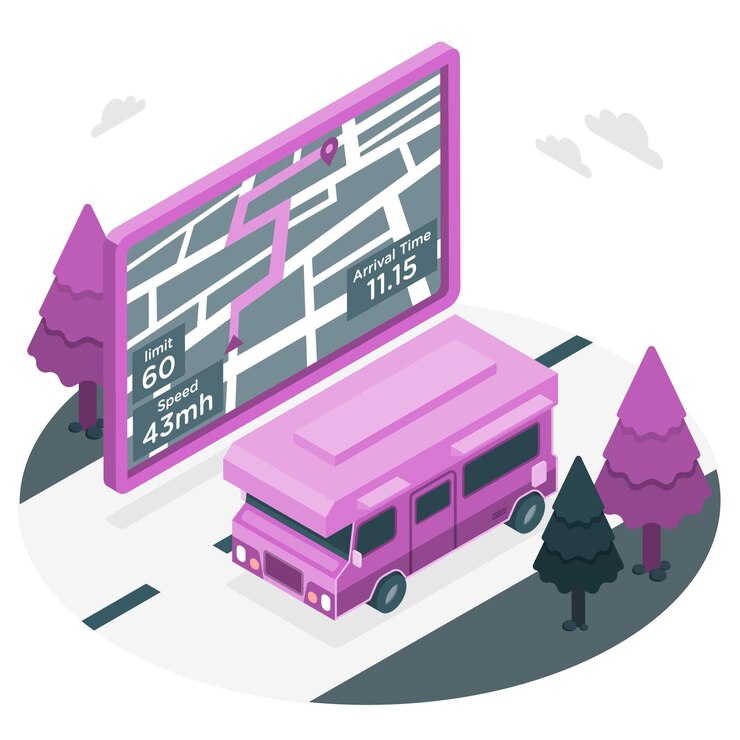
Creating a user-friendly bus ticket booking app is a vital solution for modern travel needs, making it easier and more convenient for passengers to book tickets, choose bus routes, and view schedules. This article explores the essential steps, features, and tools for bus ticket booking app development and why it’s a smart business decision. Additionally, we’ll delve into how bus rental apps and bus fleet management software development can enhance operations for bus companies, offering a seamless experience to travelers.
1. Why Develop a Bus Ticket Booking App?
In today’s fast-paced world, traditional ticketing methods are becoming obsolete. Commuters want a smooth and efficient way to book bus tickets from their smartphones, without waiting in line. A well-developed bus ticket booking app meets these needs by offering easy access to available seats, departure times, and route options. Here’s why developing such an app is beneficial:
- Convenience for Users: A bus ticket booking app makes it easy to check schedules, book seats, and receive real-time updates.
- Enhanced Revenue Streams for Operators: By adopting digital booking, bus companies increase occupancy rates and cut down on manual ticketing processes.
- Improved Operational Efficiency: Through integration with bus fleet management software, operators can streamline bus routes, manage maintenance schedules, and handle customer queries efficiently.
2. Essential Features of a User-Friendly Bus Ticket Booking App
Creating a user-friendly experience requires including features that make booking simple and efficient. Here are the essential features to include:
a) Easy Seat Selection and Booking
The primary function of the app should be a straightforward booking interface where users can select their desired seats, view different bus types, and pick from available time slots. Adding an interactive seat layout allows passengers to choose specific seats and see real-time availability.
b) Real-Time GPS Tracking and Route Navigation
Providing real-time GPS tracking allows users to monitor the location of the bus and plan their commute better. This feature is especially helpful for intercity or long-distance travels. Integration with Google Maps or similar navigation tools can help achieve accurate route tracking.
c) Fare Calculator and Payment Gateway
A built-in fare calculator should be available to calculate ticket prices based on the route and seat selection. Users should be able to complete the payment through various options like debit cards, credit cards, mobile wallets, and even UPI. Secure payment processing is critical to building user trust.
d) Notifications and Alerts
Sending notifications regarding booking confirmations, cancellations, or delays ensures that users are always informed. Alerts can also help users know when their bus is about to arrive, enhancing the app’s usability.
e) Rating and Feedback System
Allow users to provide feedback on their journey experience. This will help improve service quality and build trust with new users.
f) Multilingual Support
For bus services operating in regions with diverse languages, adding multilingual support can make the app accessible to a broader audience.
3. Backend and Database Management for Bus Ticket Booking Apps
The backend is the backbone of any mobile app. It’s responsible for processing data, managing bookings, and ensuring a smooth user experience. Let’s look at the key components required in the backend:
-
Database Management: Efficient database management is vital for storing passenger details, bus schedules, and booking history. Databases like MySQL, MongoDB, or PostgreSQL can manage this data with high reliability.
-
APIs and Integration: Use APIs to integrate payment gateways, GPS tracking, and other third-party services. APIs can also help link the app to external services, such as bus rental apps, for a seamless experience.
-
Security Protocols: Protecting user data with security protocols, including encryption, two-factor authentication, and secure data storage practices, is essential to ensure user confidence.
4. The Role of Bus Fleet Management Software in Bus Ticket Booking Apps
For bus operators, integrating a bus fleet management software with the ticket booking app offers numerous operational benefits. Here’s how:
a) Streamlined Scheduling
Fleet management software allows operators to create efficient schedules, maximizing fleet usage while meeting passenger demand. It can optimize routes, handle bookings, and schedule maintenance checks, all from a centralized dashboard.
b) Maintenance Alerts
Ensuring buses are well-maintained is critical for passenger safety and reducing unexpected delays. Fleet management software can send automated maintenance reminders based on usage or time, keeping buses in optimal condition.
c) Performance Analysis and Data Tracking
Fleet management software gathers data on fuel consumption, mileage, and driver performance, which helps operators make informed decisions to improve efficiency and reduce costs.
5. Steps for Bus Ticket Booking App Development
Now, let’s dive into the main steps required for developing a bus ticket booking app:
Step 1: Market Research and Planning
Before starting, research the target audience, study competitor apps, and identify unique features that can make your app stand out. Understanding user needs and expectations will help tailor the app accordingly.
Step 2: Define App Requirements and Features
Create a list of features that align with your target audience and business objectives. For instance, if your focus is on international routes, multi-language support and currency conversion might be critical.
Step 3: Choose the Right Technology Stack
The choice of technology stack will depend on factors like budget, development time, and platform (iOS or Android). Commonly used stacks for bus ticket booking apps include:
- Frontend: React Native, Swift, or Kotlin for iOS and Android platforms.
- Backend: Node.js, Ruby on Rails, or Django.
- Database: MongoDB, MySQL, or PostgreSQL.
Step 4: UI/UX Design
Designing a simple, easy-to-navigate interface is crucial. The design should focus on seamless user experience, especially during the booking and payment process. Aim for intuitive navigation, clear typography, and accessible icons.
Step 5: Development and Integration
With the design and features ready, developers can start building the app, ensuring smooth integration of third-party services like payment gateways, GPS, and fleet management software.
Step 6: Testing and Quality Assurance
Testing is essential for identifying and fixing bugs and ensuring the app’s functionality meets user expectations. Perform unit testing, integration testing, and user acceptance testing to eliminate any issues before launch.
Step 7: Deployment and Ongoing Maintenance
Once the app passes all testing phases, it’s ready for deployment on app stores. However, post-deployment support is crucial to manage updates, fix bugs, and introduce new features over time.
6. How Bus Rental Apps and Bus Ticket Booking Apps Can Coexist
Bus rental apps serve a different function compared to ticket booking apps but can be integrated within the same app ecosystem. Bus rental apps allow users to book an entire bus for private use, while ticket booking apps cater to individual seats. By merging these functionalities, operators can offer users both options seamlessly, appealing to a broader audience.
7. Cost Considerations for Developing a Bus Ticket Booking App
The cost of developing a bus ticket booking app can vary widely depending on the features, complexity, and geographic location of the development team. Basic apps may start around $20,000, while more complex apps with fleet management integration could exceed $100,000. Breaking down the costs into design, development, and post-launch maintenance is essential for budgeting.
Conclusion
Building a user-friendly bus ticket booking app involves understanding user needs, implementing essential features, and integrating reliable backend management. An app that offers smooth navigation, real-time updates, and secure transactions can significantly improve user experience and streamline operations for bus companies. Additionally, incorporating bus rental app functionality and bus fleet management software development can further enhance operational efficiency, making the app a powerful tool for both passengers and operators.
FAQs
1. How much does it cost to develop a bus ticket booking app?
The cost varies based on features and complexity, ranging from $20,000 to over $100,000.
2. Can a bus ticket booking app include bus rental options?
Yes, many apps combine bus ticket booking and bus rental services, offering users both options within a single app.
3. What technologies are best for bus ticket booking app development?
Common technology stacks include React Native, Node.js, and MongoDB, though the choice depends on the app’s requirements and platform (iOS or Android).
4. How can fleet management software benefit bus operators?
Fleet management software helps with scheduling, maintenance, and performance tracking, improving operational efficiency for bus operators.













